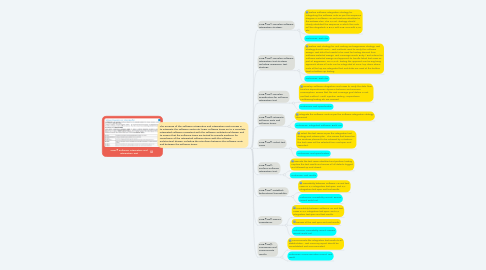
1. The purpose of the Software Integration and Integration Test Process is to integrate the software units into larger software items up to a complete integrated software consistent with the software architectural design and to ensure that the software items are tested to provide evidence for compliance of the integrated software items with the software architectural design, including the interfaces between the software units and between the software items.
1.1. SWE.5.BP1: Develop software integration strategy.
1.1.1. Define Software Integration Strategy for Integrating the Software Units as per the sequence diagram in Software AD and Features identified in the Release Plan. The SW Int. strategy should clearly identified the sequence in which the units will be integrated i.e BSW with RTE, RTE with SWC etc.
1.1.2. Outcomes: Test Plan
1.2. SWE.5.BP2: Develop software integration test strategy including regression test strategy
1.2.1. Define Test strategy for Unit Testing and Regression strategy. Test Strategy should cover - Test methods used to verify the Software Design, Test data that needs to be used for testing derived from Software Detailed Design, Test Coverage Goals, Entry / Exit criteria for Software Detailed Design and approach to handle failed test cases as part of Regression. For SW Int. testing the approach can be Big bang approach where all units can be integrated at once, top down where units at the top are integrated first and stubs are used at the bottom level or bottom up testing.
1.2.2. Outcomes: Test Plan
1.3. SWE.5.BP3: Develop specification for software integration test
1.3.1. Develop Software Integration Test cases to verify the data flow, timeline dependencies, dynamic behavior and resource consumption. Ensure that the Test coverage goal define is met and test method - Fault Injection Testing , Equivalence Partitioning testing etc are covered.
1.3.2. Outcomes: Test Specification
1.4. SWE.5.BP4: Integrate software units and software items.
1.4.1. Integrate the Software Units as per the Software Integration strategy document
1.4.2. Outcomes: Integrated Software, Build List
1.5. SWE.5.BP5: Select test cases
1.5.1. Select the test cases as per the Integration test strategy and release plan . This means that based on the Features planned to be released by Milestone, the test cases will be selected from Test spec and executed.
1.5.2. Outcomes: Test Specification
1.6. SWE.5.BP6: Perform software integration test.
1.6.1. Execute the test cases identified and perform testing. Capture the test results and ensure all all defects logged are followed up and closed.
1.6.2. Outcomes: Test results
1.7. SWE.5.BP7: Establish bidirectional traceability.
1.7.1. Traceability between Software AD and test cases in SW Integration test spec, and SW Integration test spec and test results.
1.7.2. Outcomes: Traceability record, Review record, Build List
1.8. SWE.5.BP8: Ensure consistency.
1.8.1. Traceability between Software AD and test cases in SW Integration test spec, and SW Integration test spec and test results.
1.8.2. Review of the Test spec and Test results
1.8.3. Outcomes: Traceability record, Review record, Build List
1.9. SWE.5.BP9: Summarize and communicate results
1.9.1. Communicate the Integration test results to all stakeholders - Test summary report should be consolidated and communicated
1.9.2. Outcomes: Communication record, Test result
